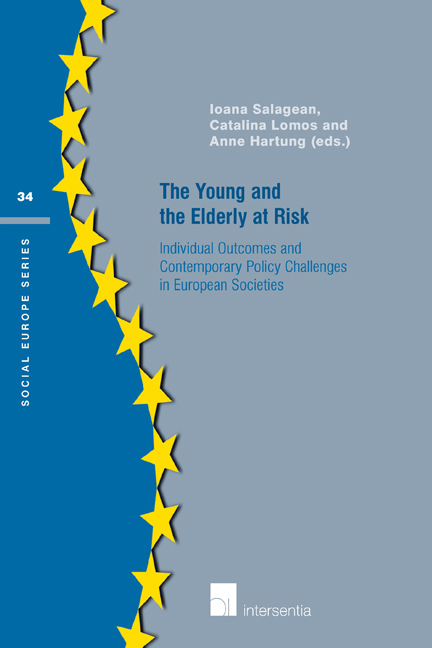 The Young and the Elderly at Risk
The Young and the Elderly at Risk Published online by Cambridge University Press: 13 December 2017
ABSTRACT
In light of population ageing, debates concerning income protection for the elderly population are high on the agenda of researchers and policy makers. These debates concern, among others, the increasing focus on the contribution from private income sources (housing and financial assets) to old-age income protection. The question is the extent to which these sources can contribute to the old-age income package and provide additional protection against old-age poverty. Based on data from the second wave of the Survey of Health, Ageing and Retirement in Europe for Belgium, the Netherlands, France and Germany, we investigate the contribution from property and financial assets to old-age income and its influence on old-age poverty. In doing so, financial assets are transposed to fictitious annuities and a reverse mortgage simulation is created to calculate the contribution from property assets. Specific attention is paid to the consequences for the income and poverty ranking at the aggregate level, as well as to the consequences for the individuallevel poverty risk of vulnerable elderly groups (single women and the oldest elderly).
Keywords: elderly, income package, assets, property, SHARE
INTRODUCTION
The population is ageing. Related topics are high on the agenda of both policy makers and researchers. One of these topics, oft en the subject of debate, refers to the adequacy of public pension systems and income protection for the elderly population, which concerns, among other issues, maintaining decent living standards after retirement and protecting the elderly against old-age poverty. After all, the larger part of the elderly population has withdrawn from the labour market (Eurostat 2013) and thus falls back on income sources that are not labour market related. To this end, most European governments have installed large-scale old-age income protection via social insurance and social assistance schemes. Overall, the pensions provided via these schemes were, and still are, considered to be the single and most important income source for the elderly population (Natali 2008). However, recent debates have questioned the extent to which public pension systems can continue providing a sufficient level of income protection to the elderly given the increasing pressure on the sustainability of these systems due to population ageing. The shift from public to private income sources to safeguard a decent income level during the retirement phase is receiving broad and increasing support.
To save this book to your Kindle, first ensure [email protected] is added to your Approved Personal Document E-mail List under your Personal Document Settings on the Manage Your Content and Devices page of your Amazon account. Then enter the ‘name’ part of your Kindle email address below. Find out more about saving to your Kindle.
Note you can select to save to either the @free.kindle.com or @kindle.com variations. ‘@free.kindle.com’ emails are free but can only be saved to your device when it is connected to wi-fi. ‘@kindle.com’ emails can be delivered even when you are not connected to wi-fi, but note that service fees apply.
Find out more about the Kindle Personal Document Service.
To save content items to your account, please confirm that you agree to abide by our usage policies. If this is the first time you use this feature, you will be asked to authorise Cambridge Core to connect with your account. Find out more about saving content to Dropbox.
To save content items to your account, please confirm that you agree to abide by our usage policies. If this is the first time you use this feature, you will be asked to authorise Cambridge Core to connect with your account. Find out more about saving content to Google Drive.